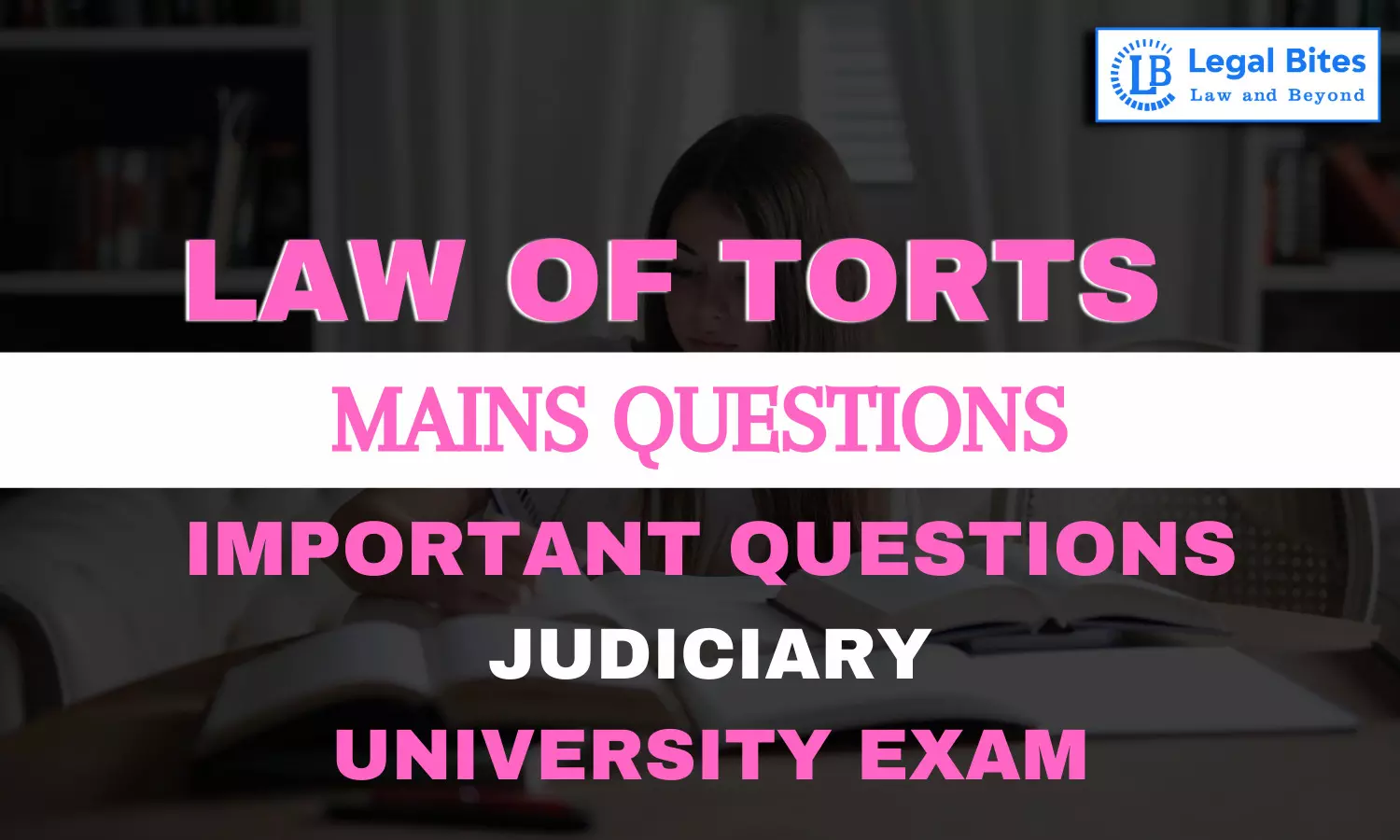What are the rules laid down in the rule of strict liability in M.C. Mehta & Anr. v. Union of India & Ors. decided on 20.12.1986?
Find the question and answer of Law of Torts only on Legal Bites.

Question: What are the rules laid down in the rule of strict liability in M.C. Mehta & Anr. v. Union of India & Ors. decided on 20.12.1986? [DJS 2015]Find the question and answer of Law of Torts only on Legal Bites. [What are the rules laid down in the rule of strict liability in M.C. Mehta & Anr. v. Union of India & Ors. decided on 20.12.1986.]AnswerM C Mehta and Anr v. Union of India is the landmark case which introduced the principle of ‘absolute liability’ in India....
Question: What are the rules laid down in the rule of strict liability in M.C. Mehta & Anr. v. Union of India & Ors. decided on 20.12.1986? [DJS 2015]
Find the question and answer of Law of Torts only on Legal Bites. [What are the rules laid down in the rule of strict liability in M.C. Mehta & Anr. v. Union of India & Ors. decided on 20.12.1986.]
Answer
M C Mehta and Anr v. Union of India is the landmark case which introduced the principle of ‘absolute liability’ in India. M.C. Mehta v. Union of India case began after an oleum gas leak from the Shriram Food and Fertilisers Ltd. complex in Delhi. This incident happened shortly following the notorious Bhopal Gas Leak disaster, leading to widespread anxiety in Delhi. M.C Mehta, also known as the ‘Green Avenger of India’ filed a Public Interest Litigation in response to the oleum gas leak. The primary issue that needs to be discussed in light of this question is whether the determination of liability of the hazardous industry will depend upon the ‘strict liability’ rule adopted in Rylands v. Fletcher or if there is any other rule that is applicable when such incidents take place.
Justice P.N Bhagwati opined that the rule of ‘strict liability’ is an age-old rule that does not serve equitable justice. While adjudging the M.C. Mehta case, the bench introduced the rule of ‘absolute liability’, making significant changes to the previous rule of ‘strict liability’. The major difference between the two is that there exist no exceptions to escape liability in the rule of absolute liability, unlike the rule of strict liability. The key rules established in this case are:
Absolute Liability:
The court introduced the concept of "absolute liability" as an extension of the rule of strict liability. According to this principle, an enterprise engaging in inherently dangerous activities is absolutely liable for any harm caused to the public, irrespective of whether the enterprise took reasonable care or not.
No-Fault Liability:
The focus is on the hazardous nature of the activity and the potential harm it may cause.
Public Interest:
The court stressed the importance of protecting the public interest and held that industries engaged in hazardous activities owe an absolute duty to the community.
No Exemption through Statutory Compliance:
The court clarified that even if an industry follows all statutory rules and regulations, it cannot claim exemption from liability in case of an accident.
Remedies and Compensation:
The court affirmed that victims of industrial accidents have the right to compensation and remedial measures. It established the "Polluter Pays" principle, holding that the party responsible for environmental pollution must bear the expenses of the damage caused.
In conclusion, M C Mehta's case by changing the English rule of strict liability brought in the rule of absolute liability to India. In today’s scenario where a lot of industries deal with inherently dangerous materials, this rule proves to be essential for the courts to effectively administer justice for the people.

Law Aspirants
Best Exam Preparation Platform for all competitive Law Exams. Prepare Practice and Go Beyond at https://www.lawaspirants.com/
